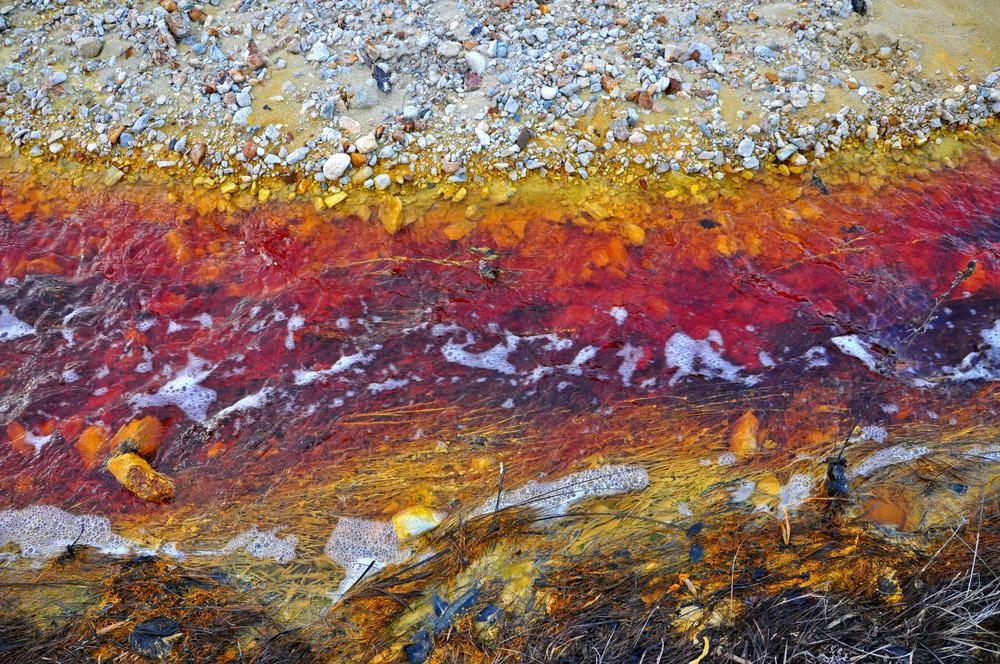In an article published in the journal Environmental Nanotechnology, Monitoring & Management, a bio-nanocomposite was created by adding silica (SiO2) and titanium dioxide (TiO2) nanoparticles into a chitosan network (CsC@SiO2@TiO2) to address heavy metal pollution.

Study: Adsorptive removal of Cr(VI) by Chitosan-SiO2-TiO2 nanocomposite. Image Credit: salajean/Shutterstock.com
The Threat Posed by Heavy Metals
Increased industrial advancement and anthropogenic excursions disrupt the delicate equilibrium that occurs between people and their ecosystem. In the past few decades, pollution caused by the dumping of heavy metals into bodies of water has risen by the day. These heavy metals, which are often found to be toxic, have a negative impact on the majority of living organisms when they exceed their level of tolerance.
Cr(VI) has been employed in a variety of industrial processes such as chromite beneficiation, chromium-based compounds, plated object rinsing, pigments and paints, tanning of leather, electroplating, and so on. Multiple investigations have found chromium in high concentrations in the industrial emissions resulting from these processes.
Cr(VI) is a highly toxic substance that behaves as a carcinogenic, mutagenic, and teratogenic agent in living organisms, leading to skin ulcers, lung cancer, allergic dermatitis, rupturing of the nasal septum, and renal problems.
This suggests that Cr(VI) poses a major concern to human wellbeing if it is discharged into the atmosphere at concentrations greater than the allowed amount of 0.1 mg/L. As per the USEPA, the maximum concentration of Cr(VI) in potable water must be no more than 0.05 mg/L. Therefore, the scientific world must devise a viable and efficient technique for removing Cr(VI) prior to its release into the atmosphere.
Different Techniques for Removing Chromium
Froth floatation, chemical treatment, ionic exchange, adsorptive treatment, solvent extraction, reverse osmosis, and other methods have been devised to remove Cr(VI) from polluted water. Adsorption is among the most viable options for chromium elimination since it is cost-efficient.
Limitations of Alternate Techniques
Froth floatation and chemical treatment require the use of a significant quantity of chemical substances, which may cause contamination, necessitating post-treatment removal of surplus chemical substances. Ionic exchange may be beneficial only if the pollutants are ionic in nature and only appear in a singular chemical configuration. Reverse osmosis is an expensive process that necessitates the substitution of costly membranes regularly. For large-scale treatment of bodies of water, solvent extraction is impractical.
Different Choices of Adsorbing Materials
Chitosan, cellulose, magnetite nanoparticles, chitin, calcined bauxite, charcoal, composites, and other adsorbing materials have all been studied for Cr (VI) elimination. Recent research has demonstrated the use of a variety of substances for solitary and multiple metal adsorbing procedures, such as botanical residues, bentonite composites, and shell powder.
Why is Chitosan a Good Choice?
Chitosan is a powerful bio-adsorbent that has been employed in agriculture, food, biomedicine, and environmental purposes. It is made by deacetylating chitin, which, after cellulose, is one of the most common biopolymers found in the ecosystem. By coordinating, the occurrence of amine functional groups in the chitosan polymer network promotes attraction for heavy metals.
To improve the adsorptive propensity and stability of adsorbent chitosan materials, impregnation, molecular imprinting, and crosslinking were used to create a variety of altered chitosan adsorbent materials. In the current landscape of materials chemistry, chitosan offers a wide range of uses. Owing to their chemical and thermal stability, porousness, and broad surface area, the integration of different inorganic moieties with biopolymers is extensively employed in adsorbing technology today.
Highlights of the Study
In this study, chitosan-based bio-composite CsC@SiO2@TiO2 was created by crosslinking silica and titanium dioxide into the chitosan framework utilizing bifunctional glutaraldehyde as a crosslinking agent.
The integration of these two nanoparticles (NPs) not only increased the thermal and mechanical stability of the chitosan-based biopolymer, but also significantly enhanced the adsorbing rate and capacity as opposed to pure chitosan.
At pH 3, this material was employed for the specific adsorption of Cr(VI). Since the adsorbing surface has a positive charge and Cr(VI) occurs in chromate form at pH 3, the interactions occurring in this situation were electrostatic.
The rising negative values of Gibb's energy change with rising temperature indicated that the adsorbing mechanism was instantaneous and beneficial at elevated temperature as well. Since the magnitude of enthalpy change was positive, the adsorbing mechanism was endothermic.
The bio-composite may be replenished with sodium hydroxide and utilized again for adsorbing Cr(VI) up to four times with a lack of noticeable decrease in adsorbing capability.
Reference
Billah, R. E., Shekhawat, A., Mansouri, S., Majdoubi, H., Agunaou, M., Soufiane, A., & Jugade, R. (2022). Adsorptive removal of Cr(VI) by Chitosan-SiO2-TiO2 nanocomposite. Environmental Nanotechnology, Monitoring & Management. Available at: https://www.sciencedirect.com/science/article/pii/S2215153222000551?via%3Dihub
Disclaimer: The views expressed here are those of the author expressed in their private capacity and do not necessarily represent the views of AZoM.com Limited T/A AZoNetwork the owner and operator of this website. This disclaimer forms part of the Terms and conditions of use of this website.